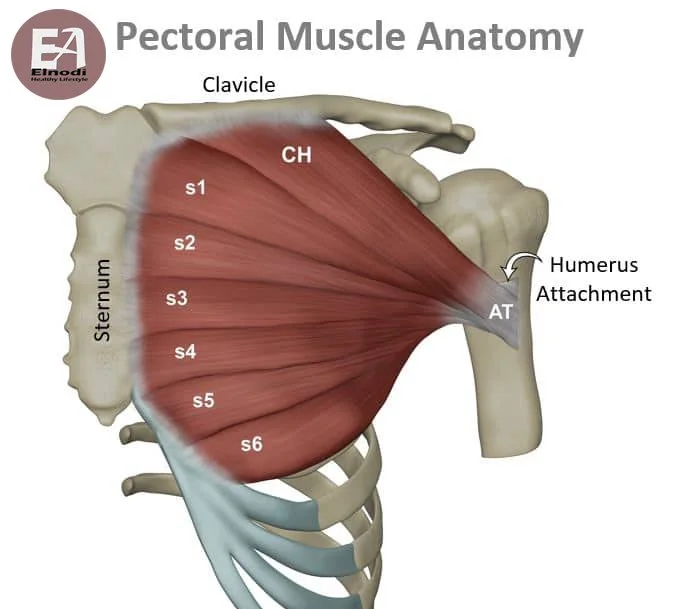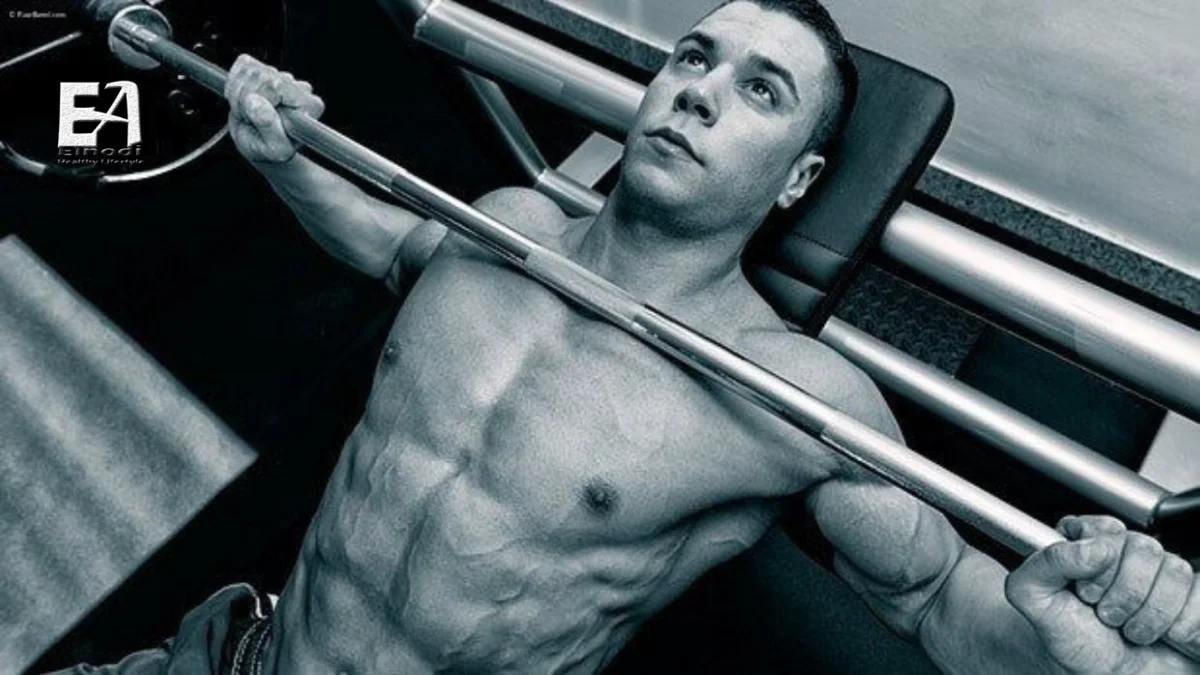Tips for the incline barbell bench press workout. Explore how the exercise is done, the proper technique, which muscles are active, and more
The incline barbell bench press is a great way to stimulate chest growth too. Here’s how to do it. Bench pressing is a great exercise for building strength, but it’s not the only muscle group that gets involved.
What Is an Incline Barbell Bench Press?
The incline barbell bench press is another name for the incline bench press. It’s a muscle-building activity. These activities build your strength and ability to undertake hard jobs. Daily tasks are simplified, and you can work for longer periods of time without becoming tired. The incline bench press, like other muscle-strengthening exercises, strengthens your bones and improves your blood pressure and blood sugar levels.
The incline bench press effectively increases upper body strength. It works the muscles of your chest (pectorals), shoulder (deltoids), and arms (triceps). Beginners can do this exercise with some guidance, and it is also useful for advanced gym-goers.
Benefits of the Incline Bench Press
There are numerous compelling reasons why you should incorporate this exercise into your training regimen. Increase Upper Body Strength
Grow More Muscle Mass
With this exercise, you can utilize heavy weights for high volume, making it ideal for hypertrophy. It is a powerful multi-joint complex action that is ideal for increasing muscular mass.
Enhance Upper Body Pressing Power
Any athlete can benefit from this unique technique to improve upper body pressing strength. You can utilize it to work on problems or to change things up in your training.
Better Isolation for the Chest
The primary muscle group targeted is the pecs; however, the Incline Bench Press isolates the chest better than the flat variety. The incline position stimulates the upper chest fibers to a greater extent and makes the weight harder to lift. In turn, this leads to great gains for the chest.
Muscles Worked by the Incline Barbell Bench Press

The pecs are the primary muscle group addressed; however, the Incline Bench Press isolates the chest better than the flat variation. The inclined posture activates the chest’s upper fibers more and makes the weight more difficult to raise. As a result, the chest gains significantly.
Front (Anterior) Deltoids
The front deltoids are engaged during the bench press. The incline press, on the other hand, involves the front delts to a higher extent. You’ll target your upper chest and anterior deltoids as you move into a more vertical pressing plane. The more vertical your press angle, the more your shoulders are involved.
Pectorals (Chest)
All bench pressing movements engage the chest muscles. The incline press, on the other hand, places more demands on the upper chest muscles due to the press’s increased angle in the press.
Triceps
In the top part of the bench press, your triceps work to extend your elbow. During the incline bench press, these muscles operate in a similar manner. As a result, this motion can diversify triceps pressing strength, which will ultimately benefit your presses in general.
Wrists
The exercise will also strengthen the wrists and make them more resistant to injury if you slowly bring up the weights over time.
How to do the Incline Barbell Bench Press exercise
Incline Barbell Bench Press Instructions

- Lie flat on an incline bench and set your hands just outside of shoulder width.
- Pinch your shoulder blades together and drive them into the bench to set them.
- Take a deep breath and allow your spotter to help you with the lift-off in order to maintain tightness through your upper back.
- Allow the weight to settle and keep your upper back taut after lifting off.
- Inhale and allow the bar to descend slowly by unlocking the elbows.
- Straighten the bar to the base of the sternum (breastbone) and touch the chest.
- Press yourself into the bench, drive your feet into the floor for leg drive, and extend your elbows to bring the bar back up in a straight line.
- Repeat for the desired number of repetitions.
Incline Barbell Bench Press Tips
- Technique first, weight second – no one cares how much you bench if you get injured.

- Maintain a straight line by keeping the bar in line with your wrists and elbows. To keep the wrist straight, position the bar as low in the palm as feasible while still wrapping the thumb.
- If you want to keep more tension through the triceps and chest, stop each repetition just short of lockout at the top.
- Don’t be concerned about excessive elbow tucking; a lot of this advice comes from geared lifters wearing suits. Some lifters may benefit from a tiny tuck on the way down, but others can employ Greg Nuckols’ brilliant cue “flare and push” to get the same result.
- Arching may be advisable depending upon your goals but ensure that most of the arch comes from the mid to upper back and not your lower back. If your lower back is cramping as you set up for the lift, you’re out of position and putting yourself at risk for potential injury.
- Every repetition, the bar should come into contact with your chest. Look into board presses or adapting resistance with chains or bands if you want to overload specific ranges of motion.
- As the bar descends, aim for your sternum (breastbone) or slightly below depending upon the length of your upper arm in order to promote a linear bar path.
- Intermediate and intermediate lifters may utilize a thumbless or “suicide” grip, but for the majority of lifters, learning to bench with the thumb wrapped around the bar is preferable at first.
- Fight the urge to allow the wrists to roll back into extension, think about rolling your knuckles toward the ceiling.
- Experiment with grip breadth; if you have longer arms, a somewhat wider grasp may be required. If you experience pressure in the front of your shoulder during the exercise, you may need to widen your grip, enhance scapular retraction, or reduce the range of motion slightly with exercises like floor or board presses.
- Squeeze the bar as tightly as possible to help enhance shoulder stability.
- As you press, keep your shoulder blades retracted, and don’t let them change position.
- The bar should descend under control and touch the lifter’s chest – no bouncing or excess momentum.
- Think about trying to push yourself away from the bar instead of pushing the bar off of you.
- Tightness through the upper back should be one of your main priorities throughout the course of the lift.
- Ideally, use a spotter to help assist with the lift-off in order to maintain tension through the upper back.
- Maintain silent feet throughout the lift and use leg drive to support the pelvis by driving your feet into the floor and tightening your glutes.
- Focus on pulling the bar apart or trying to “bend the bar” in order to activate some of the intrinsic stabilizers in the shoulder.
- Throughout the exercise, the glutes and shoulder blades should remain in contact with the bench.
Mistakes for Incline Barbell Bench Press

Some precautions are crucial to doing inclined bench presses safely:
- Always ensure that the weights are securely fastened. Check that the spring collar is securely fastened.
- Both sides’ weights should be equal. In addition, your grip should be central so that the weight of the barbell is evenly distributed.
- Make sure your feet are firmly planted before lifting the weight. Lower the bench if needed, or place something stable under your feet.
- Keep your wrists from rolling back. Keep them parallel to your forearms. Allowing your wrists to bend back can result in damage.
When starting out, as with any muscle-strengthening activity, moderation is key. Begin slowly at a pace you can maintain, then progress to more strenuous activity.
Always have a spotter on hand. This may be your coach or a friend. If you are unable to complete the last rep, your spotter can assist you in lifting the barbell onto the rack. To avoid injury, a spotter is required.
Incline Barbell Bench Press Alternatives
If you are unable to perform the movement for any reason, these alternatives can be utilized to replace it.
Seated Shoulder Press
This is a compound shoulder exercise, yet it is identical to the action it replaces. It is simple to accommodate more of the chest by lowering the angle of the bench by one notch.
Flat Bench Press
The original form is perhaps the most popular upper-body exercise. It will help develop and strengthen the chest, triceps, and shoulders.
Incline Close Grip Dumbbell Bench Press
This concentrates the majority of the stimulus on the triceps. Hold two dumbbells together (palms facing each other) in your hands. Keep the elbows close to the body to reduce the amount of shoulder stress.
This movement will increase upper pectoral and triceps muscle hypertrophy and general pressing strength.
Flat Bench Press vs Incline Bench Press – Which is Better?
Two of the most popular chest exercises are the flat bench press and the incline barbell bench press. Both workouts engage the chest muscles but in different ways. The flat bench press emphasizes the lower chest, whereas the incline bench press emphasizes the upper chest.
| Feature | Flat Bench Press | Incline Bench Press |
|---|---|---|
| Angle of the bench | Parallel to the ground | 15-45 degrees |
| Muscles worked | Lower chest, anterior deltoids, triceps | Upper chest, anterior deltoids, triceps |
| Benefits | Builds overall chest size and strength | Builds upper chest size and definition |
So, which exercise is preferable? It is determined by your objectives. The flat bench press is an excellent alternative for increasing total chest size and strength. The incline bench press is a better alternative for increasing upper chest growth and definition.
It is also important to consider your individual risk factors. If you have shoulder pain, you may want to avoid the flat bench press or use a lower weight. If you have neck pain, you may want to avoid the incline bench press or use a lower weight.
Experiment and find what works best for you to determine which workout is suitable for you. Begin with a modest weight and progressively increase it as you gain strength. you avoid injury, make sure you employ good form.





